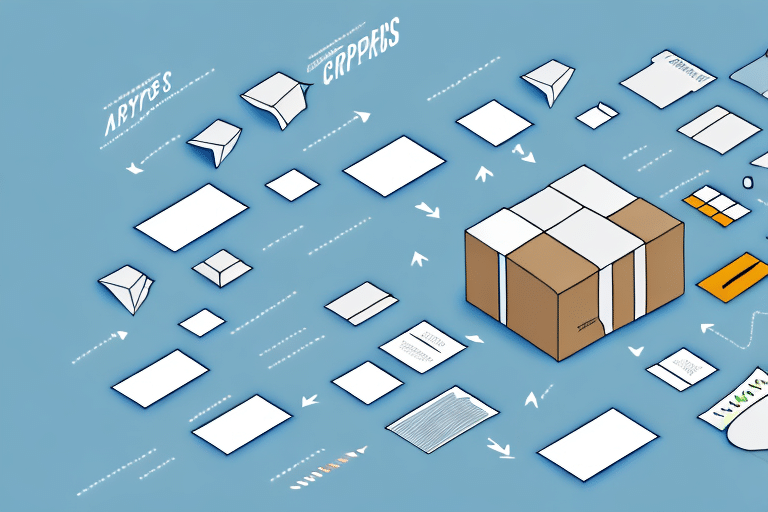How to Optimize Your Shipping Process for Maximum Efficiency
In today's fast-paced business world, fast and efficient shipping is crucial to the success of any company. Whether you're an online retailer, a B2B supplier, or any other type of business that needs to get products from point A to point B, optimizing your shipping process is key to ensuring timely deliveries, reducing costs, and enhancing customer satisfaction. In this article, we will explore various strategies and best practices that you can use to optimize your shipping process for maximum efficiency.
The Importance of Efficient Shipping Processes
Efficient shipping processes are essential to keeping your business running smoothly and meeting customer expectations. According to a Statista report, 88% of consumers consider timely delivery as a crucial factor in their purchasing decisions. When shipments are delayed or arrive damaged, it can lead to unhappy customers, lost sales, and increased costs. Optimizing your shipping process helps you address issues proactively, reduce the risk of errors, and ensure that your shipments are delivered on time and in good condition.
Investing in technology that can help you track and manage your shipments more effectively is one way to improve your shipping process. This can include software that provides real-time updates on the status of your shipments, as well as tools that allow you to automate tasks such as printing shipping labels or generating customs documents.
Another important factor to consider when optimizing your shipping process is the environmental impact of your operations. By choosing more sustainable shipping options, such as using recycled materials for packaging or partnering with carriers that prioritize eco-friendly practices, you can reduce your carbon footprint and appeal to customers who value sustainability.
Identifying and Overcoming Shipping Bottlenecks
To optimize your shipping process, it's important to first identify any bottlenecks or inefficiencies. This involves analyzing your order processing, fulfillment, and delivery workflows to pinpoint areas where delays or errors occur. According to a study by Business Insider, common shipping bottlenecks include inventory management, order processing delays, and transportation issues.
One common bottleneck in the shipping process is inventory management. If you don't have accurate inventory counts or if your inventory is disorganized, it can lead to delays in fulfilling orders and even shipping out incorrect items. To address this, consider implementing an inventory management system that tracks your stock levels in real-time and alerts you when items are running low. Organizing your inventory in a way that makes it easy to locate and pick items for shipping can also significantly reduce processing time.
Automating Shipping Procedures and Choosing the Right Software
Automation is a cornerstone of an efficient shipping process. Automating tasks such as order processing, label printing, carrier selection, and tracking can help reduce errors, save time, and improve accuracy. A Supply Chain Digital report highlights that businesses that adopt automation can see up to a 20% increase in productivity.
Selecting the right shipping software is essential for optimizing your shipping process. With dozens of shipping solutions available, each offering different features, pricing, and interfaces, it's important to evaluate your specific needs. Look for software that integrates seamlessly with your e-commerce platform or inventory management system.
Additionally, consider the level of customer support provided by the software vendor. Access to knowledgeable and responsive support staff can help troubleshoot any issues that arise, ensuring your shipping operations remain smooth and efficient.
Effective Packaging and Sustainable Shipping Practices
The way you package your goods can significantly impact your shipping costs and efficiency. Choosing the right packaging materials and ensuring that items are securely packed can reduce the risk of damage and minimize shipping fees. According to the Packaging Strategies, businesses can save up to 15% on packaging costs by optimizing their packaging materials and methods.
Using custom-sized boxes ensures that your items fit snugly, reducing excess space and materials needed for packaging. This not only minimizes packaging costs but also lowers the overall shipping weight, which can reduce shipping fees. Additionally, employing eco-friendly packaging materials can enhance your brand's reputation and appeal to environmentally conscious consumers.
Proper labeling is equally important. Clear labels with accurate shipping information and handling instructions can prevent delays and damage during transit. Including necessary documentation, such as customs forms for international shipments, helps avoid holdups and additional fees.
Enhancing Customer Satisfaction and Communication
Effective communication is crucial for maintaining customer satisfaction in the shipping process. Keeping customers informed about their order status, tracking information, and any delays can enhance their overall experience. Automated email notifications and proactive tracking updates help keep customers in the loop and reduce the risk of misunderstandings.
Moreover, communication with carriers and logistics partners is essential for ensuring timely pickups and deliveries. Clear and concise communication helps address any issues promptly, minimizing delays and disruptions in your supply chain. According to a Inbound Logistics article, effective communication can lead to a 30% improvement in supply chain efficiency.
Cost Reduction Strategies: Freight Consolidation and Inventory Management
Reducing shipping costs while maintaining efficiency is a key goal for businesses. Freight consolidation, which involves combining multiple shipments into a single larger shipment, can help achieve significant cost savings. This strategy is particularly beneficial for businesses that ship goods to multiple destinations or have smaller orders that are not cost-effective to ship individually. By consolidating freight, you can maximize shipping volume and reduce transportation costs.
Effective inventory management also plays a critical role in cost reduction. Maintaining accurate inventory levels and forecasting demand helps avoid stockouts and overstocking, leading to more efficient order fulfillment and reduced storage costs. Implementing an advanced inventory management system allows for better tracking of stock levels and automates reordering processes, ensuring optimal inventory control.
Additionally, freight consolidation contributes to sustainability by reducing the number of trucks on the road, thereby lowering emissions. This not only helps protect the environment but can also enhance your company's reputation as a sustainable business.
Best Practices for International Shipping
International shipping presents unique challenges, particularly regarding customs clearance. To ensure smooth and timely deliveries, it's essential to familiarize yourself with the rules and regulations of the countries you're shipping to. Using a shipping software tool that can handle customs paperwork and automate documentation processes can significantly streamline your international shipping operations.
Choosing a carrier with experience and expertise in international shipping is also crucial. Experienced carriers are better equipped to navigate customs procedures and handle any issues that may arise, minimizing delays and additional costs.
Moreover, providing accurate and detailed shipping information, including proper labeling and necessary documentation, can prevent customs delays and ensure that your shipments comply with international trade regulations.
Measuring Performance and Collaborating with Third-Party Logistics Providers
To ensure ongoing optimization of your shipping process, it's important to measure and analyze key metrics such as shipping costs, delivery times, and customer satisfaction. Tools like Tableau or Power BI can help visualize and analyze this data, allowing you to identify areas for improvement and make data-driven decisions.
Collaborating with third-party logistics providers (3PLs) can also boost efficiency and reliability. 3PLs can handle various aspects of your shipping process, including inventory management, order processing, and carrier selection. According to Forbes, companies that partner with 3PLs can reduce shipping costs by up to 15% and increase overall supply chain efficiency.
3PLs often have established relationships with carriers, which can lead to better shipping rates and more reliable delivery schedules. By leveraging the expertise and resources of 3PLs, businesses can focus more on their core operations while ensuring their shipping processes remain efficient and cost-effective.
In conclusion, optimizing your shipping process is essential to the success of your business. By evaluating your workflows, using the right shipping software and tools, and continuously monitoring and analyzing key metrics, you can enhance your shipping efficiency, reduce costs, and improve customer satisfaction. Implement these strategies today, and take control of your shipping process for maximum efficiency and success.




















